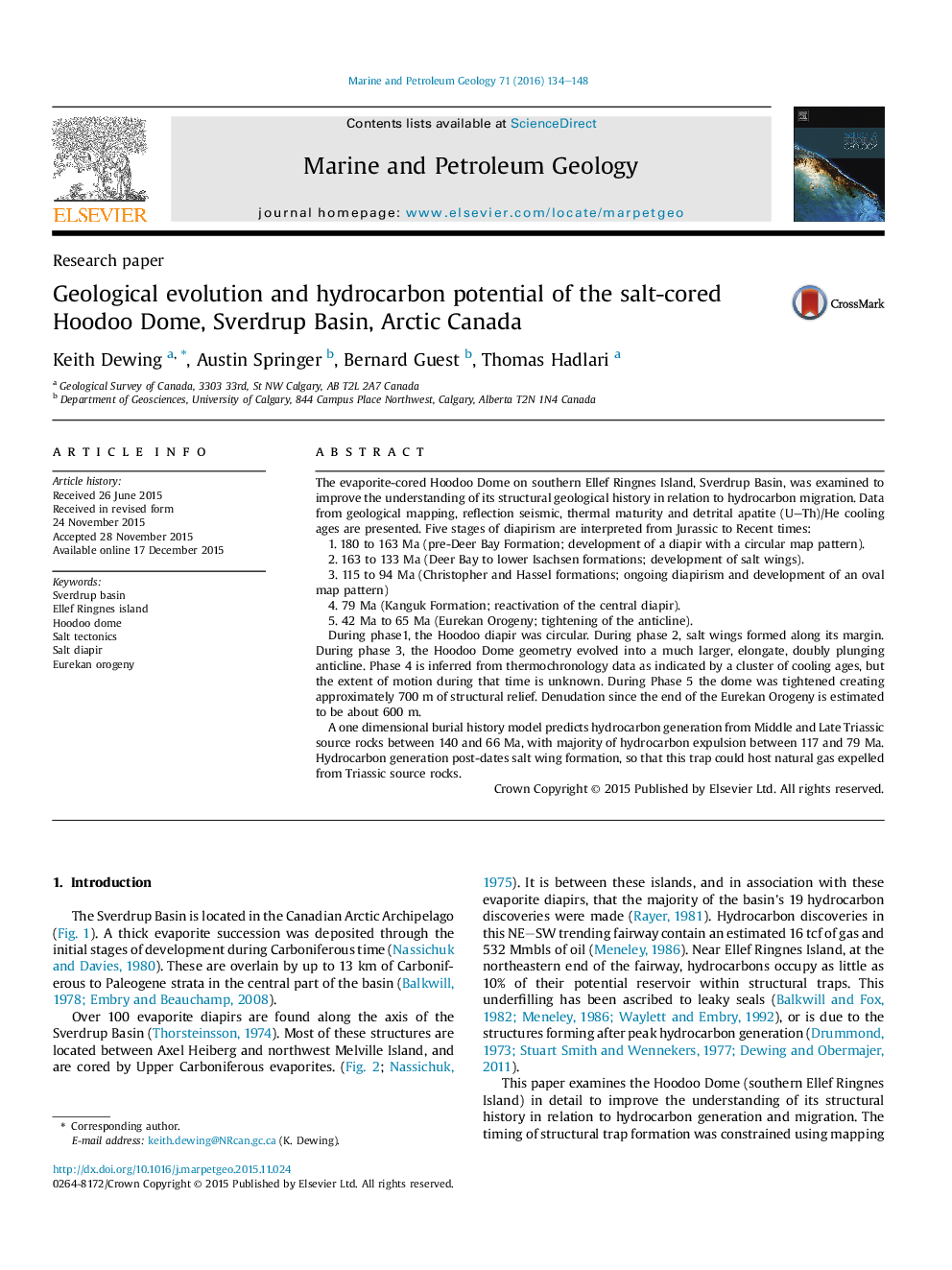| کد مقاله | کد نشریه | سال انتشار | مقاله انگلیسی | نسخه تمام متن |
|---|---|---|---|---|
| 4695420 | 1637156 | 2016 | 15 صفحه PDF | دانلود رایگان |

• Structural history of the salt-cored Hoodoo Dome in the central Sverdup Basin, Arctic Canada is examined.
• Five episodes of diapirism took place from Jurassic to Recent times.
• The Hoodoo Dome was circular prior to the Early Cretaceous, becoming an elongate, doubly plunging anticline during the Albian.
• Salt wings on the margins of Hoodoo Dome are inferred to have formed no later than latest Valanginian.
• A one dimensional burial history model for the Hoodoo Dome H-37 well predicts hydrocarbon generation from Triassic source rocks between 140 and 66 Ma, post-dating salt wing formation.
The evaporite-cored Hoodoo Dome on southern Ellef Ringnes Island, Sverdrup Basin, was examined to improve the understanding of its structural geological history in relation to hydrocarbon migration. Data from geological mapping, reflection seismic, thermal maturity and detrital apatite (U–Th)/He cooling ages are presented. Five stages of diapirism are interpreted from Jurassic to Recent times:1. 180 to 163 Ma (pre-Deer Bay Formation; development of a diapir with a circular map pattern).2. 163 to 133 Ma (Deer Bay to lower Isachsen formations; development of salt wings).3. 115 to 94 Ma (Christopher and Hassel formations; ongoing diapirism and development of an oval map pattern)4. 79 Ma (Kanguk Formation; reactivation of the central diapir).5. 42 Ma to 65 Ma (Eurekan Orogeny; tightening of the anticline).During phase1, the Hoodoo diapir was circular. During phase 2, salt wings formed along its margin. During phase 3, the Hoodoo Dome geometry evolved into a much larger, elongate, doubly plunging anticline. Phase 4 is inferred from thermochronology data as indicated by a cluster of cooling ages, but the extent of motion during that time is unknown. During Phase 5 the dome was tightened creating approximately 700 m of structural relief. Denudation since the end of the Eurekan Orogeny is estimated to be about 600 m.A one dimensional burial history model predicts hydrocarbon generation from Middle and Late Triassic source rocks between 140 and 66 Ma, with majority of hydrocarbon expulsion between 117 and 79 Ma. Hydrocarbon generation post-dates salt wing formation, so that this trap could host natural gas expelled from Triassic source rocks.
Journal: Marine and Petroleum Geology - Volume 71, March 2016, Pages 134–148